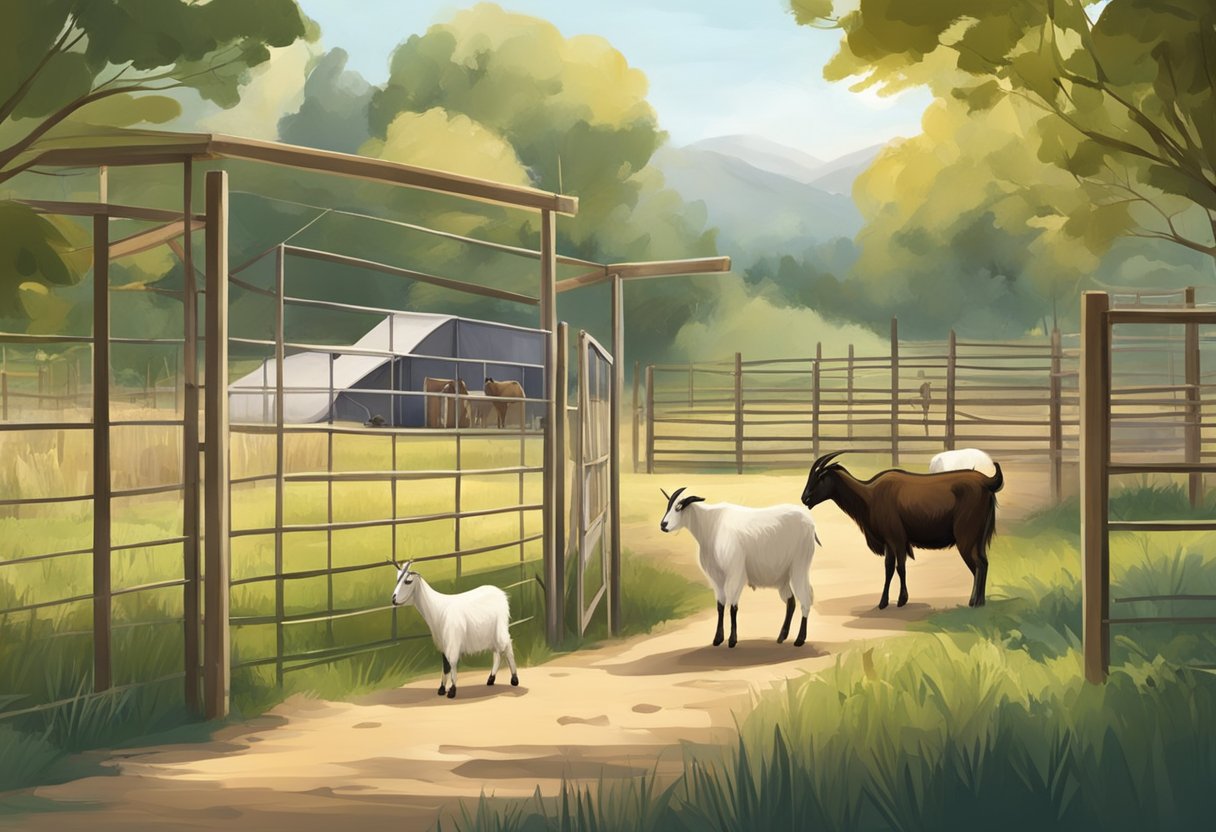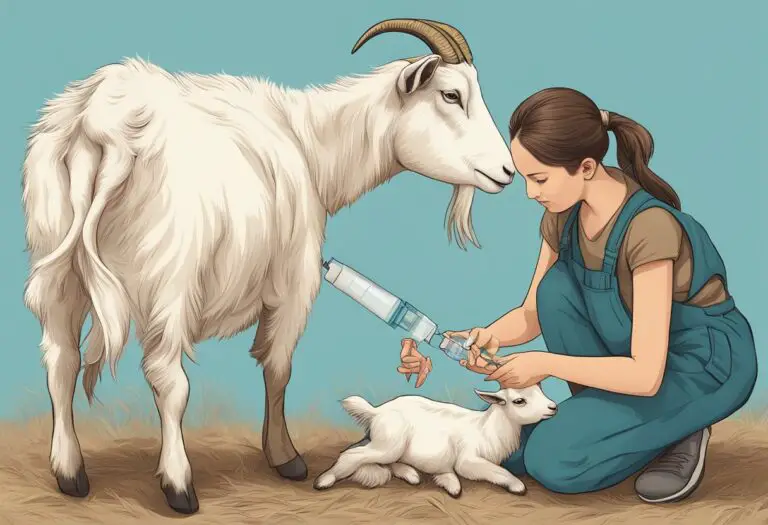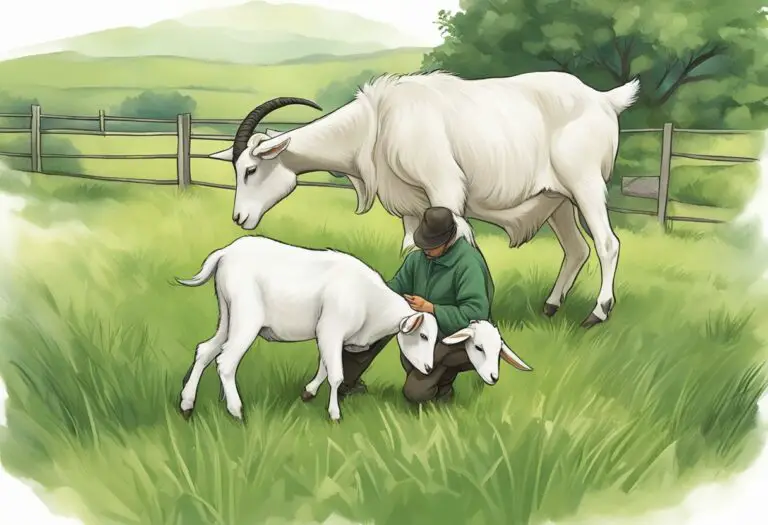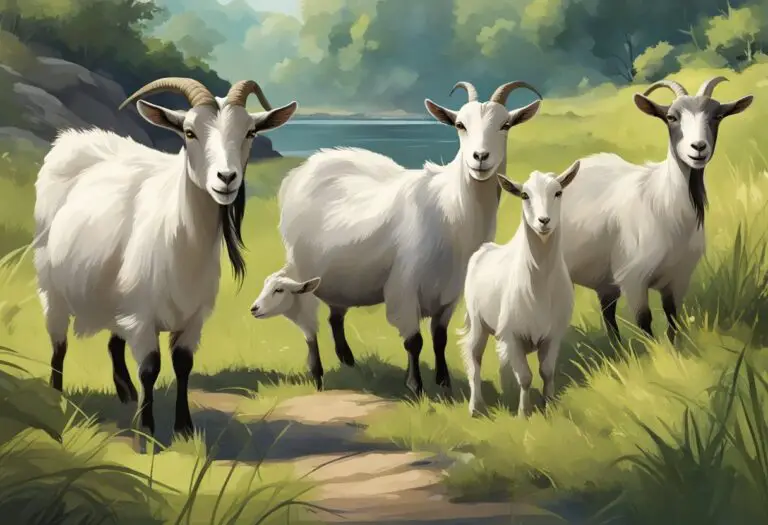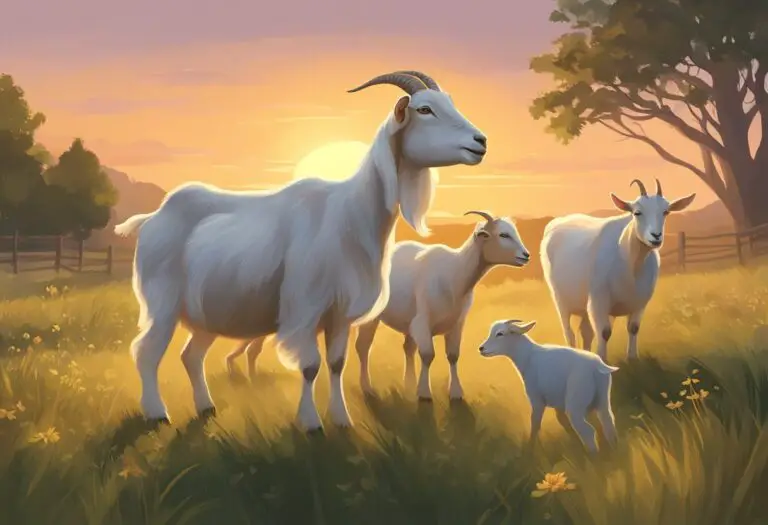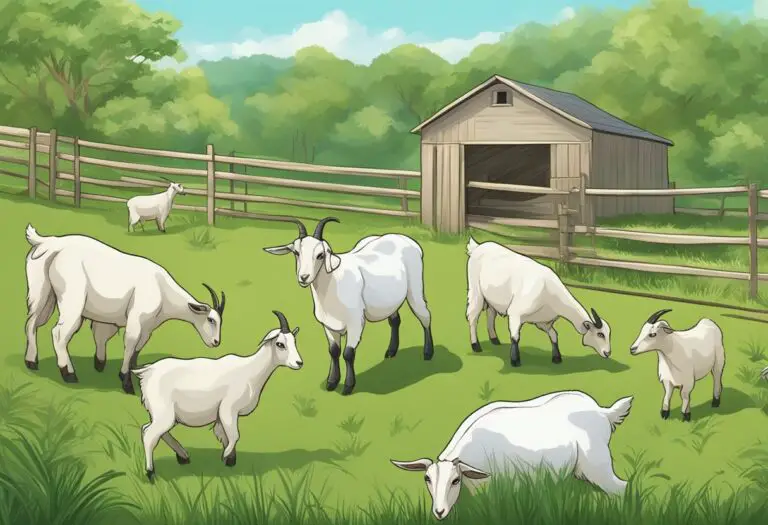How to Breed Goats for Meat: A Comprehensive Guide
Breeding goats for meat is a lucrative business that requires careful planning and management. Goats are a popular source of meat in many parts of the world due to their hardiness, adaptability, and high-quality meat. However, to be successful in goat breeding, one must have a good understanding of the different breeds, their characteristics, and how to manage them effectively.
The first step in breeding goats for meat is to select the right breed. There are many breeds of goats, each with its unique characteristics and advantages. Some breeds are known for their high-quality meat, while others are better suited for milk production or fiber. It is essential to choose a breed that is well-suited for meat production and has a good market demand.
Once you have selected the right breed, the next step is to ensure that the goats are healthy and well-fed. Proper nutrition is essential for the growth and development of the animals, and it is crucial to provide them with a balanced diet that meets their nutritional needs. Additionally, regular veterinary check-ups are necessary to ensure that the animals are healthy and free from diseases that could affect their growth and meat quality.
Understanding Goat Breeding

Breeding Goals for Meat Production
When breeding goats for meat, there are several goals to keep in mind. The primary goal is to produce goats that are healthy, have good meat quality, and are efficient in converting feed into meat. Other goals include improving carcass weight, increasing the number of kids per doe, and improving the growth rate of the kids.
Selecting the Right Goat Breed
Selecting the right breed is critical when breeding goats for meat. Some breeds are known for their meat production, while others are not. Boer goats are the most popular meat breed, known for their fast growth rate and high-quality meat. Other breeds that are good for meat production include Spanish, Kiko, and Tennessee Fainting goats.
When selecting a breed, it is important to consider factors such as the climate and environment in which the goats will be raised, as well as the market demand for the meat. It is also important to select healthy, disease-free goats with good genetics. A breeding program should aim to improve the breed over time, by selecting the best animals for breeding and culling those that do not meet the desired standards.
In conclusion, understanding goat breeding is essential when breeding goats for meat. Breeders should aim to produce healthy, efficient, and high-quality meat goats, while selecting the right breed and improving the genetics of the herd over time.
Nutrition and Health Management

Feeding for Optimal Growth
Feeding is one of the most important aspects of goat breeding for meat. It is essential to provide goats with a balanced diet that meets their nutritional needs. A good diet will help to ensure that goats gain weight quickly and produce high-quality meat.
Goats require a diet that is high in protein and energy. They should be fed a combination of hay, grains, and protein supplements. It is important to provide them with fresh, clean water at all times.
It is recommended to feed goats twice a day, in the morning and in the evening. The amount of feed given should be adjusted based on the weight and age of the goat. Young goats require more protein and energy than adult goats, so their feed should be higher in protein and energy.
Health Checks and Vaccinations
Regular health checks and vaccinations are essential to ensure that goats remain healthy and disease-free. It is important to work with a veterinarian to develop a vaccination schedule that is appropriate for your goats.
Goats should be vaccinated against common diseases such as tetanus, clostridium perfringens types C and D, and respiratory diseases. They should also be dewormed regularly to prevent parasitic infections.
In addition to vaccinations and deworming, it is important to monitor goats for signs of illness. This includes checking for changes in behavior, appetite, and appearance. Any changes should be reported to a veterinarian immediately.
Overall, proper nutrition and health management are essential for successful goat breeding for meat. By providing goats with a balanced diet and regular health checks, breeders can ensure that their goats remain healthy and produce high-quality meat.
Breeding Process

Estrus Cycle and Timing
Goats have an estrus cycle that lasts for about 21 days. During this period, the goat is receptive to mating and can become pregnant. It is important to keep track of the estrus cycle to ensure successful breeding. Signs of estrus in goats include a swollen vulva, a discharge from the vulva, and restlessness.
The timing of breeding is crucial for successful reproduction. Goats should be bred during their estrus cycle for the best chance of pregnancy. It is recommended to breed goats in the fall or early winter to ensure that the kids are born in the spring when there is plenty of forage available.
Mating Strategies
There are two main mating strategies for breeding goats: natural breeding and artificial insemination. Natural breeding involves allowing a buck to mate with a doe. Artificial insemination involves collecting semen from a buck and depositing it into the doe’s reproductive tract.
Natural breeding is the most common method of breeding goats. It is important to have a healthy and fertile buck for successful breeding. Bucks should be separated from does until breeding time to ensure that they are ready and willing to mate.
Artificial insemination is a less common method of breeding goats but can be useful for improving genetics. It is important to work with a veterinarian or experienced breeder when using artificial insemination.
Pregnancy and Kidding
After successful breeding, the doe will become pregnant and carry the kids for about 150 days. It is important to provide proper nutrition and care during pregnancy to ensure healthy kids.
Kidding is the process of giving birth to kids. The doe will typically give birth to one to three kids at a time. It is important to be prepared for kidding by having a clean and dry area for the doe to give birth and having supplies on hand such as towels, iodine, and a heat lamp.
In conclusion, the breeding process for goats involves tracking the estrus cycle and timing breeding, choosing a mating strategy, and providing proper care during pregnancy and kidding. By following these guidelines, breeders can increase the chances of successful breeding and produce healthy kids for meat production.
Managing the Herd

Herd Record Keeping
Keeping accurate records is essential for managing a goat herd. It allows the breeder to keep track of each goat’s health, breeding history, and production levels. The records should include information such as the goat’s date of birth, weight, vaccinations, and medications.
A breeding log should also be maintained to track the breeding dates and outcomes. This information can be used to determine the optimal breeding time for each goat and to avoid inbreeding.
Genetic Diversity and Herd Improvement
To maintain a healthy and productive herd, it is important to focus on genetic diversity and herd improvement. This can be achieved by introducing new bloodlines into the herd through selective breeding or by purchasing new goats.
Breeders should also evaluate each goat’s performance and select the best ones for breeding. This helps to improve the overall quality of the herd and increase the production of meat.
Regular genetic testing can also help to identify potential health issues and improve the breeding program. By focusing on genetic diversity and herd improvement, breeders can ensure a healthy and productive goat herd for years to come.
Facilities and Equipment

Housing Requirements
Goats need adequate shelter to protect them from extreme weather conditions and predators. The housing should be spacious enough to accommodate the number of goats being reared. Each goat should have at least 20 square feet of space. The housing should also be well-ventilated to prevent the buildup of moisture and ammonia. It is recommended to use a raised floor to keep the goats dry and clean. The housing should be cleaned regularly to prevent the buildup of dirt and manure.
Breeding Equipment
Breeding goats for meat requires specific equipment to ensure the best results. The following are some of the essential equipment needed:
- Breeding harness: This is used to hold the buck in place during mating.
- Breeding stand: This is used to hold the doe in place during mating.
- Tattoo pliers: This is used to mark the goats for identification purposes.
- Hoof trimmers: This is used to trim the goat’s hooves to prevent foot problems.
- Milk stand: This is used to milk the goats.
In addition to the above equipment, it is recommended to have a breeding plan in place to ensure the best results. This involves selecting the best breeding stock and carefully monitoring their health and nutrition. By having the right facilities and equipment, goat breeders can ensure the best conditions for their animals and maximize their profits.
Marketing and Economics

Market Analysis
Before breeding goats for meat, it is essential to conduct a market analysis to determine the demand for goat meat in your area. You can start by researching the local market and identifying potential buyers. Some of the potential buyers could be local restaurants, grocery stores, and individual consumers.
It is also important to research the prices of goat meat in your area to determine the most profitable pricing strategy. You can also identify the most popular cuts of goat meat and tailor your breeding program to meet the demand.
Costs and Revenue Streams
Breeding goats for meat can be a profitable venture if done correctly. However, it is important to consider the costs involved in the breeding process. Some of the costs you need to consider include feed, vet bills, labor, and breeding stock.
To ensure profitability, it is important to identify revenue streams that can offset the costs. Some of the revenue streams could be selling breeding stock, selling goat milk, and selling goat hides.
It is also important to keep accurate records of all the costs and revenues to determine the profitability of your breeding program. This will help you make informed decisions and adjust your breeding program accordingly.
In conclusion, breeding goats for meat can be a profitable venture if done correctly. Conducting a market analysis and identifying revenue streams can help you maximize your profits while keeping the costs low.
Regulations and Ethical Considerations

Breeding goats for meat is a regulated activity that requires compliance with local, state, and federal laws. It is important to understand and follow these regulations to avoid legal issues and ensure the safety of the animals and consumers.
One of the most important regulations is the Animal Welfare Act, which sets standards for the treatment of animals in research, exhibition, transport, and by dealers. It requires that animals be provided with adequate food, water, shelter, and veterinary care. Breeders must also follow guidelines for humane slaughter, which include stunning the animal before killing it.
In addition to legal regulations, ethical considerations should also be taken into account when breeding goats for meat. This includes providing the animals with a comfortable and healthy living environment, avoiding unnecessary harm or stress, and ensuring that they are treated with respect and dignity.
Breeding goats for meat can be a rewarding and profitable venture, but it is important to do so in a responsible and ethical manner. By following regulations and ethical guidelines, breeders can ensure the well-being of their animals and provide consumers with safe and high-quality meat products.

